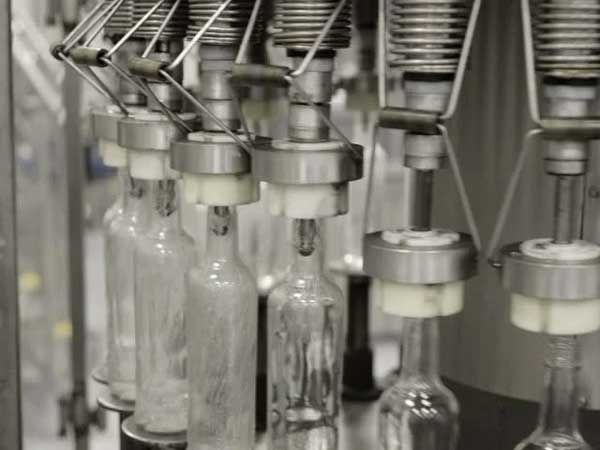Automatic Liquid Bottle Filling Machine Working Principle
Although most people know what a liquid bottle filling machine does, it can be difficult to find the right machine due to the large number of types. In this article, we will describe how a liquid bottle filling machine works to help you find the perfect option for your production line, increasing productivity and efficiency.

Liquid Bottle Filling Machine
The most important difference between liquid bottle filling machines is the level of automation required, as large factories that mass produce products require more sophisticated technology than a home business. Liquid bottle filling machines require little human intervention and simply fill the bottles and send them to the next stage of production. Users can adjust the machine to accommodate different speeds, capacities, and container types. Semi-automatic machines require some human intervention, such as moving containers in and out of the filling area.
Liquid Bottle Filling Machine Demonstration
To highlight how a liquid bottle filling machine works, a video will give you a complete understanding of the entire process of a liquid bottle filling machine.
Liquid Bottle Filling Machine Working Principle
Liquid bottle filling machines are used in various industries to fill bottles with liquid products. The working principle of these machines can vary depending on the type of liquid and the required accuracy. However, the basic operation involves several common steps:
Bottle Feeding:
Empty bottles are fed into the liquid bottle filling machine typically using a conveyor belt system. The bottles are positioned under the filling nozzles.
Filling Method:
The filling process can be based on several principles, such as gravity, vacuum, piston, and overflow filling. The choice depends on the liquid’s properties (viscosity, foaming, etc.) and the desired accuracy.
Gravity Filling: This method uses the weight of the liquid and gravity to fill bottles. It is suitable for free-flowing liquids with low viscosity.
Vacuum Filling: This method creates a vacuum inside the bottle to draw the liquid from the supply. It is used for foamy or viscous liquids and ensures precise filling.
Piston Filling: In this method, a piston draws a specific volume of liquid and dispenses it into the bottle. It is ideal for highly viscous liquids and provides high accuracy.
Overflow Filling: This method uses a pump to fill the bottles until they overflow. Excess liquid is collected and reused. It is commonly used for products that foam.
Control and Monitoring:
Sensors and controls ensure the bottles are correctly positioned, and the filling nozzles dispense the exact amount of liquid. The machine can adjust the flow rate and stop the filling process once the desired volume is reached.
Capping:
After filling, the bottles move to the capping station, where caps are placed and sealed on the bottles. This process can be integrated into the liquid bottle filling machine or handled by a separate capping machine.
Labeling and Packaging:
The filled and capped bottles may then proceed to labeling and packaging stations, where labels are applied, and the bottles are packed for distribution.
Quality Control:
Quality control systems may include weight checks, inspection for proper filling levels, and sealing integrity.
The specific design and operation of a liquid bottle-filling machine depend on the type of liquid being filled, the required filling speed, and the precision needed. Modern machines often incorporate automation and digital controls to ensure efficiency and consistency.
Conclusion
Overall, there are many liquid bottle filling machines available for various liquid types and container sizes and shapes. The right liquid bottle filling machine will be combined with other processes such as capping and packaging, and fill the number of units per hour required by the business to increase productivity.
Therefore, working with experts who have experience in various business areas can help you find the perfect customized solution and move to the next level. If you would like to learn more, please contact us and we will help you develop the perfect liquid filling process.

